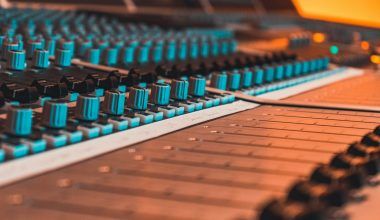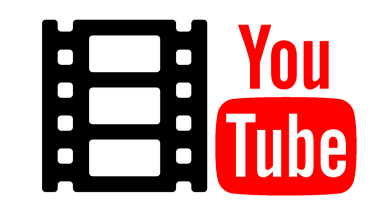If you’re a musician looking to earn a steady income, YouTube can be a game-changer. With millions of active users consuming video content daily, the platform offers incredible opportunities to showcase your talent and get paid for your music. Learning how to monetize your music on YouTube easily is simpler than you might think, but it requires consistent effort and a solid strategy. Let’s dive into everything you need to know.
Why YouTube Is Perfect for Musicians
YouTube is more than just a video-sharing platform; it’s a hub for music discovery. With billions of music videos watched daily, it provides artists with exposure and a way to connect with fans worldwide. On top of that, YouTube offers various monetization tools, from ad revenue to fan subscriptions, making it a vital platform for musicians.
Understanding YouTube’s Monetization Basics
Before you start earning, you need to understand how monetization works on YouTube. Essentially, YouTube pays creators based on ad revenue, memberships, Super Chat, and YouTube Premium. Here’s how each option can help you monetize your music:
- Ad Revenue: When ads play before or during your video, you earn a portion of the revenue.
- Channel Memberships: Fans can pay a monthly fee for exclusive perks.
- Super Chat: During live streams, viewers can pay to have their messages highlighted.
- YouTube Premium: You earn a share of the subscription fee when Premium users watch your content.
Step 1: Set Up a YouTube Channel
To begin, create a professional YouTube channel that reflects your brand as an artist. Choose a name that’s easy to remember and aligns with your music. Use high-quality images for your profile picture and banner. Write a compelling channel description that explains your music journey and what fans can expect.
Step 2: Join the YouTube Partner Program
To monetize your channel, you’ll need to join the YouTube Partner Program (YPP). Here are the requirements:
- Have at least 1,000 subscribers.
- Accumulate 4,000 valid watch hours in the last 12 months.
- Adhere to YouTube’s community guidelines.
- Set up an AdSense account for payments.
Once you meet these criteria, apply for YPP from your YouTube Studio dashboard. Approval usually takes a few weeks.
Step 3: Optimize Your Videos for Discoverability
Getting discovered on YouTube is crucial for growing your audience and earning revenue. Use these strategies:
- Keyword Research: Identify terms your audience searches for, like “acoustic covers” or “original indie music.”
- Catchy Titles: Make your titles engaging and relevant.
- Thumbnails: Use high-quality, attention-grabbing thumbnails.
- Tags and Descriptions: Add relevant tags and detailed descriptions that include your focus keyword.
- Playlists: Organize your videos into playlists to keep viewers engaged.
Step 4: Use Content ID to Protect Your Music
YouTube’s Content ID system ensures you get paid when your music is used in other videos. Distributors like TuneCore or DistroKid can register your music with Content ID, so you earn revenue every time your song is played elsewhere on the platform.
Step 5: Build a Loyal Fan Base
Creating consistent and engaging content is key to building a loyal audience. Here are a few tips:
- Upload Regularly: Stick to a schedule to keep fans coming back.
- Engage with Comments: Reply to comments and interact with fans during live streams.
- Share Behind-the-Scenes Content: Give fans a glimpse of your creative process.
- Collaborate with Other Creators: Partnering with fellow musicians or influencers can expose you to new audiences.
Step 6: Diversify Your Revenue Streams
Don’t rely solely on ads. Use other YouTube features to increase your earnings:
- Merchandise Shelf: Sell branded merchandise directly from your channel.
- Crowdfunding: Encourage fans to support you through platforms like Patreon.
- Live Performances: Use YouTube to promote your virtual or in-person shows.
Step 7: Promote Your Music Beyond YouTube
Cross-promote your YouTube channel on social media platforms, your website, and even email newsletters. Collaborate with influencers or run targeted ads to reach a wider audience. This will drive traffic to your channel and increase your revenue potential.
The Importance of Analytics
YouTube Analytics is a treasure trove of data. Monitor which videos perform best, your audience demographics, and how viewers find your content. Use these insights to refine your strategy.
Common Mistakes to Avoid
While it’s easy to get excited about monetization, avoid these pitfalls:
- Overloading Videos with Ads: Too many ads can frustrate viewers.
- Ignoring Quality: Poor audio or video quality can turn away potential fans.
- Not Engaging with Fans: Failing to interact with your audience can make your channel feel impersonal.
Looking Ahead: Future Trends in YouTube Music Monetization
As YouTube continues to evolve, new opportunities will emerge for musicians. Features like Shorts and AI-generated recommendations are becoming powerful tools for artists to gain visibility and monetize their work. Staying updated on these trends can give you a competitive edge.
Conclusion
Monetizing your music on YouTube easily is a realistic goal if you approach it strategically. Focus on building your audience, optimizing your content, and diversifying your revenue streams. By putting in the effort and leveraging the platform’s tools, you can turn your passion for music into a sustainable income source.
Remember, YouTube is not just about making money; it’s about connecting with your fans and sharing your art with the world. Start today, and let your music reach its full potential!
For further reading, explore these related articles:
- How to Create Usernames Based on Music for Every Style and Taste
- The Ultimate Guide to Online Mastering Audio for Free
- Understanding Royalty Share: A Win-Win Revenue Model
For additional resources on music marketing and distribution, visit DMT Records Private Limited.






